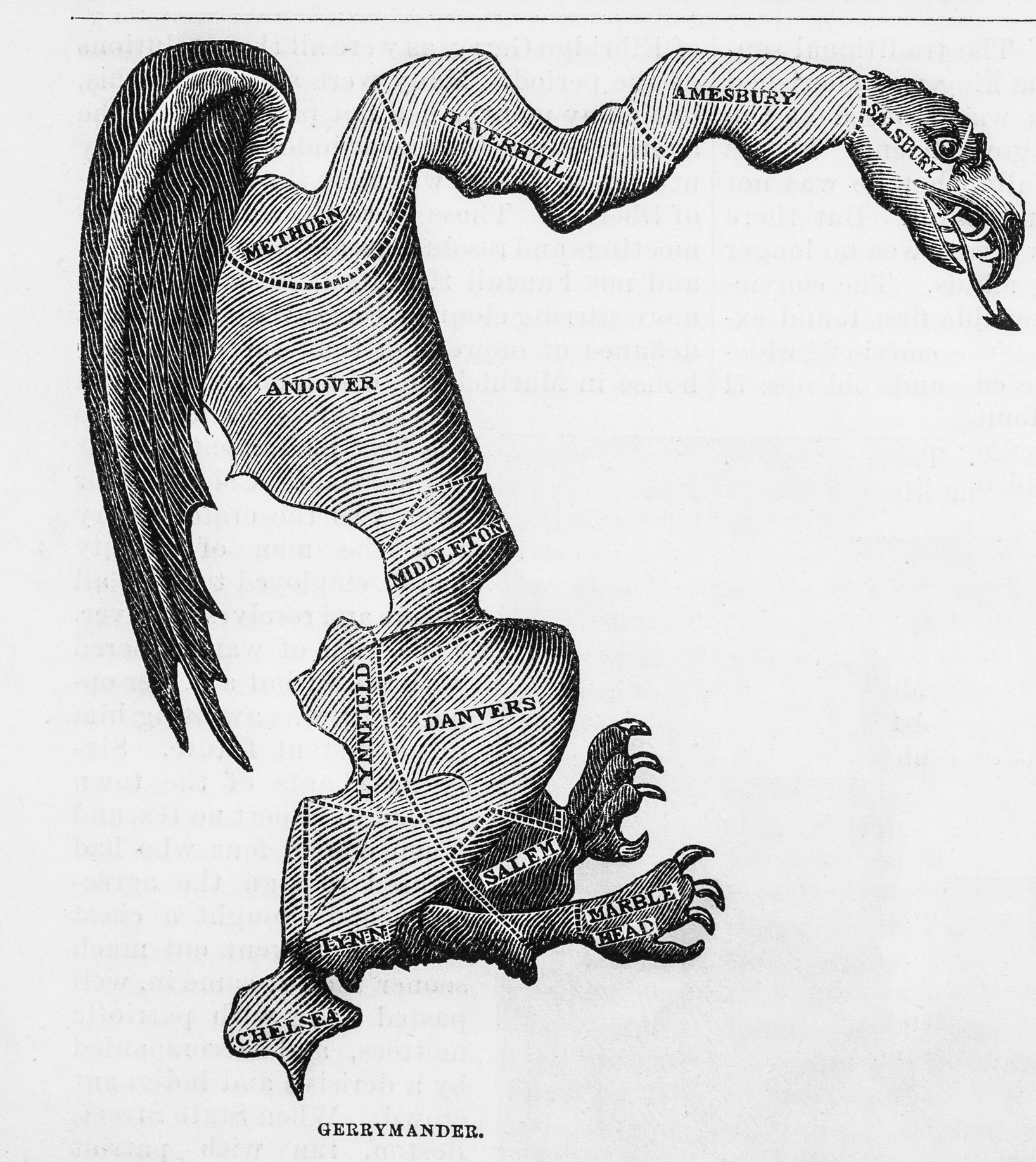By Mel Wilson, NASW Senior Policy Advisor

The Texas Ranger statue in front of the Texas capitol building in Austin.
Texas lawmakers have made a decision that is a deeply troubling afront to voting rights. Its aggressive and unprecedented gerrymandering strategy that — if it comes to fruition — challenges the fundamental principles of representative democracy.
The redistricting plan — the brainchild of the Trump administration and quicky agreed to by Texas Gov. Greg Abbott — was presented to the public as a routine redrawing of the state’s electoral map. However, that presentation is purposefully misleading.
The true motivation for the Trump administration and the state of Texas to move forward with redistricting, which allows states to reapportion Congressional representation, is blatantly and unambiguously political.
In the same vein, it is telling that neither President Trump nor Gov. Abbot is shy about the political nature of their actions. For example, in July 2025, Trump responded to a questions about the Texas redistricting plan by saying, “[it’s] Just a simple redrawing we pick up five seats.” Governor Abbot has made similar comments that enthusiastically embraces a political objectives for redistricting. There is little doubt that they both see this strategy as an effective counter-offensive to the vulnerability of the Republicans with respect to losing the House majority in the 2026 midterm elections.
As an aside, it is important to note that the constitution mandates states to initiate and complete redistricting plans at a time that coincides with the national census, which is every 10 years . Given that the next official census is five years away, for Texas to redistrict this year is very much out of the ordinary. However, there are no constitutional prohibitions preventing states from redrawing district maps in between the 10-year official national census.
That said, on the surface, this could be misconstrued as a run-of-the-mill political skirmish. In reality, the Texas redistricting plan raises profound concerns about the erosion of fair political representation. By manipulating district boundaries to entrench partisan power and dilute the voting strength of communities of color, Texas risks disenfranchising millions of its residents and distorting the will of the electorate. Too many, these tactics take the country down the path of a moral and constitutional crisis, thereby threatening the integrity of democratic governance in the entire nation.
Is it Racial Gerrymandering or Partisan Gerrymandering?
There has been a concerted effort on the part of Texas’ Republican leadership to portray their mid-cycle redistricting initiative as being partisan gerrymandering as opposed to racial gerrymandering. Making this distinction is critically important to Gov. Abbott if he wants to avoid a court ruling — by the Supreme Court — that the state’s new map reflects a designed intent to disenfranchise Black and Latino voters. Relatedly, in that the Supreme Court essentially (in 2019) ruled that partisan gerrymandering did not violate the Voting Rights Act, Texas leadership feel they have legal cover by insisting their new district maps are “race blind.”
Impact on Black and Brown Congressional Representation
In truth, the decision of Texas to gerrymander its districts has many characteristics of what is defined as racial gerrymandering. Consequently, Texas’ new redistricting maps will certainly have a significant impact on t Black and Brown legislators representing the state in Congress. This is because the targeted gerrymandering tactic is designed to reshape districts in such a way as to dilute the voting power of these communities. The newly drawn maps will collapse historically Black and Latino districts into one another.
For example, Houston’s 29th District — which is heavily Latino—would no longer be majority Latino, effectively erasing its cultural identity and political influence. As a result, assuming the redistricted maps go into effect, Democrats could wind up with only 8 of Texas’ 38 congressional seats — down from the current 13 seats.
According to State Rep. Vince Perez (D-El Paso), the proposed Texas district map allocates a ratio of one congressional seat for every 430,000 white resident. This compares with one seat for every 1.2 million Latino residents, and one congressional seat for every 2 million Black residents. The result is this disproportionate allocation is that Latino voters would have one-third the voting power of white voters, and Black voters just one-fifth — all of which suggests racial gerrymandering as opposed to partisan gerrymandering.
Despite these facts, Texas Republican political leaders are unrelenting in their insistence that they are embracing a partisan gerrymandering approach with a goal of gaining political advantage. They have convinced themselves that their approach is “race blind” . On the contrary, Democrats and voting rights advocates are firm in their belief that Texas’ new map undermines the political influence of Black and Latino communities and violates the Voting Rights Act of 1965 .
Texas Redistricting Reflects a Broader Trump Administration Plan to Retain Power
The underlying impetus for Texas’ redistricting actions is the Trump Administration’s deep fear that Republicans will lose control of the House in 2026 . As referred to earlier, it was Trump’s outreach to Gov. Abbott that put the Texas gerrymandering plan in motion. It was lost on no one — especially Texas and national Democrats— that redistricting is about political power, and the battleground is at a national level. This is a worrisome concern for those opposed to the Trump administration’s hold on power—which they see as a threat to democracy. Therefore, opponents are mobilizing against the Texas gerrymandering move with an eye on the probability that they will have to fight the same battle in a number of other Republican States.
In many ways, the Democratic members of Texas legislature are on the frontlines of what could be an extremely fraught point in time for our democracy. Their commitment to voting equity helps to remind us that the upcoming elections are profoundly important. It is no secret that the Trump administration and the far-right are themselves fully mobilized with detailed strategic plans to — by any means necessary— control the mid-term outcomes to strongly favor Republicans.
The Texas gerrymandering effort is only one of what is sure to be many schemes —such as voting suppression, voter intimidation and other similar tactics— that will be initiated by the Trump administration in the coming months. We can rest assured that the Trump administration’s campaign to undermine the next election is already geared up and mobilized in every state in the union.
Legal Consequences
Texas gerrymandering is a microcosm of a broader Trump administration plan to manipulate the outcomes of the 2026 mid-term elections. The success of that plan is dependent on the outcomes of critical legal court challenges to past and present election protection laws.
To add historical context to this issue, gerrymandering —in particular, racial gerrymandering— rose in prominence in the South shortly after Reconstruction ended. Gerrymandering and other voting suppression strategies were in response to the fact that formerly enslaved men outnumbered white men in many voting districts in the South — this dramatically shifted the balance of real and potential political power in those districts during Reconstruction. Once Reconstruction was removed as a forceful obstacle, white southerners used every available method to prevent Black men from voting— including racial gerrymandering. Other efforts to solidify their grip on electoral power included:
- Between 1890 and 1908, Southern states rewrote constitutions and passed laws to make voter registration more difficult and often administered in discriminatory ways.
- These laws were crafted to appear race-neutral but were implemented to target Black voters specifically, skirting the Fifteenth Amendment.
This widespread practices of racial (and partisan redistricting) flourished unchecked in the South for close to 100 years before the Voting Rights Act of 1965 (VRA) was passed. However, more recently the Voting Rights Act has come under attack via court challenges. The first of those cases (in 2013) was Shelby County v Holder which shockingly gutted key voter protection provisions in the VRA. Subsequently there have been other similar court challenges including:
 Rucho v, Common Cause: Unfortunately, the protections against all forms of gerrymandering encountered a major stumbling block in 2013 when the Supreme Court (SCOTUS) gutted essential enforcement provision from the VRA. Ironically, even though the 2013 ruling seriously weakened VRA, the protection against gerrymandering remained intact. That was the case until 2019 when SCOTUS ruled— with a specific focus on partisan gerrymandering — in Rucho v. Common Cause. In that ruling, SCOTUS said that federal courts, including SCOTUS, did not have jurisdiction over partisan gerrymandering. The Court further stated that such cases must be resolved in state courts and legislatures. Significantly, the 2019 Rucho v Common Cause decision allowed racial gerrymandering to remain outlawed under the protection of VRA.
Rucho v, Common Cause: Unfortunately, the protections against all forms of gerrymandering encountered a major stumbling block in 2013 when the Supreme Court (SCOTUS) gutted essential enforcement provision from the VRA. Ironically, even though the 2013 ruling seriously weakened VRA, the protection against gerrymandering remained intact. That was the case until 2019 when SCOTUS ruled— with a specific focus on partisan gerrymandering — in Rucho v. Common Cause. In that ruling, SCOTUS said that federal courts, including SCOTUS, did not have jurisdiction over partisan gerrymandering. The Court further stated that such cases must be resolved in state courts and legislatures. Significantly, the 2019 Rucho v Common Cause decision allowed racial gerrymandering to remain outlawed under the protection of VRA.
The decision in this case effectively removed federal oversight of partisan gerrymandering. With the guardrails down, it has since emboldened aggressive redistricting efforts in states like Texas, where one party controls the process. Legal challenges to gerrymandering now rely on state constitutions and courts, which vary widely in their protections and interpretations.
Louisiana v. Callais: With respect to racial gerrymandering, there is a pending and soon to be decided SCOTUS voting rights case that could scuttle all other remaining race-based protections in VRA. Louisiana v. Callais challenges the long-standing use of Section 2 of the VRA, which prohibits voting practices that dilute the power of racial minorities. If the Court rules that creating districts that are based on race—even if it was designed to remedy past discrimination—is unconstitutional, it could gut Section 2 and end federal protections against racial gerrymandering. The fear is that in Texas even one election cycle under the new gerrymandered maps could result in diminished representation for Black and Brown communities in that state — making it harder to elect leaders from those communities who reflect their constituents’ priorities.
A Gerrymandering Arms Race?
The political consequences of a looming and perhaps an inevitable “gerrymandering arms race” involving both Democratic and Republican states is reshaping the national political landscape in significant and potentially disruptive ways. More to the point, unrestricted freedom to gerrymander voting district maps is deeply problematic and leads to abuses. More troubling, such abuses often becomes pervasive when one political party has sole control of the process. Under single-party control, there is a likelihood that transparency will become inadequate, resulting in a severe absence of fair representation of the public as a whole. Other concerns are:
- Polarization intensifies: With fewer swing districts, candidates cater to their base rather than the center, fueling ideological extremism.
- Public trust erodes: As voters perceive the system as rigged, faith in democratic institutions declines.
It must be understood that a “gerrymandering arms race” is not simply a technical “food fight” over district lines. Texas democrats and the national Democratic leadership acknowledge that mass gerrymandering could be the potentially destructive, However, these same leaders take the position that there is an imperative that the Democrats adopt the counteraction redistricting Democratic states —to do otherwise would capitulate in a battle over the soul of representative democracy.
The following quote better articulates national voting rights organizations’ position on this dilemma:
In the current mid-decade redistricting battle, we recognize that President Trump and Republican leaders are pursuing a calculated, asymmetric strategy to redraw districts mid-decade in states like Texas, to lock in unaccountable power and silence voters. This is not an isolated political tactic; it is part of a broader march toward authoritarianism, dismantling people-powered democracy, and stripping away the people’s ability to have a political voice and say in how they are governed.
We therefore will not condemn countermeasures that meet our fairness criteria. And we will oppose countermeasures that do not meet our criteria. We have established these fairness criteria so we can respond to the most urgent threats to fair representation while holding all actors to the same principled standard: people—not parties—first. This moment is not only about countering immediate threats.- Common Cause- August 2025
Conclusion
It is a foregone conclusion that Texas will create and submit a mid-cycle redistricting map that will increase the state’s Congressional delegation by 5 representatives. As concerning as that is, it would be more disturbing if we view the Texas action as isolated “one-off” occurrence — it decidedly is not. The statement by Common Cause captures the urgency of the situation in terms of Texas being one cog in the gears that are driving the far-right’s unrelenting mission to win the mid-term election— ignoring any notions of fairness and integrity.
In some ways, the far-right and the Trump administration would be happy to have election integrity advocates— and the American public — focus on Texas’ gerrymandering, Their hope is that the opposition will then lose focus on the far-right’s ongoing overall strategic plan to move forward with – in addition to gerrymandering – voting suppression, voter intimidation and outright lies to achieve their goals. The voting rights battleground is multi-faceted and expansive. The civil and voting rights communities must not lose sight of this truism.
In the long run, as matter of principle, gerrymandering as a tool for gaining political power is wrong. The practice has an ugly history of disenfranchising African American and other communities of color and suppressing fair and guaranteed access to the ballot. Disappointingly, the U.S. Congress has rejected two pieces of legislation that would address this issue:
- The Freedom to Vote Actsought to bar partisan gerrymandering nationwide. It also would have banned mid-decade redistricting and set other national standards — and made it easier and faster for voters to win relief.
- The John R. Lewis Voting Rights Advancement Actwould have strengthened protections against racially discriminatory maps.
These landmark bills came very close to enactment in 2022. Together they would stop what is happening today. In the meantime, the Democratic leadership and the civil and voting rights communities have no other choice but to take the counter-offensive of redistricting Democratic-led states to offset the advantage in the House that Gov. Abbott and other red state governors will gain with their gerrymandering strategy.




